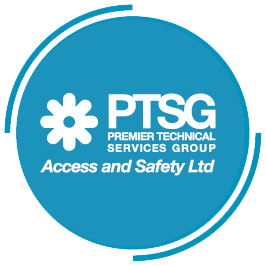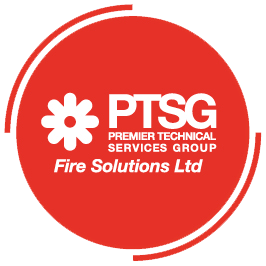Part of: Ventilation and Ductwork
Indoor air quality testing, often referred to as IAQ, will give you peace of mind that the air your team members, visitors or tenants breathe is clean and healthy.
What is indoor air quality?
Indoor air quality (IAQ) refers to the purity of the air inside a building. It can be affected by a range of issues, and pollution may be in the form of:
Solid particles – microscopic particles of dirt and dust, often referred to as particulate matter.
Gases – including, for example, carbon monoxide, carbon dioxide, and sulphur dioxide; these may or may not be detectable by odour.
Liquids – microscopic droplets of water or some other liquid that can hang in the air.
What influences the quality of the air we breathe?
Indoor air quality is influenced by many factors, such as your location, the external sources of pollution, the effectiveness of air handling unit (AHU) filters, occupation levels, performance of your ventilation system, and even the fabric and décor in your building.
Poorly maintained systems and ductwork are a primary source of poor air quality, and the impact this has on a building’s occupants should not be underestimated.
What are the risks associated with poor air quality?
Many pollutants can be harmful to your health, causing illness and allergic reactions. At best, building occupants are likely to suffer with drowsiness and lethargy.
The contaminants themselves are rarely harmful, unless inhaled in vast quantities; however, once inside a ventilation system they combine with condensation, a by-product of the humidity present in all HVAC systems. The result is the growth of microbial activity, which presents significantly higher risks to the occupants of your building.
In hospitals, it has been shown that uncleaned air conditioning ductwork is an ideal breeding ground for bacteria, including MRSA.
What are the essentials for clean, healthy indoor air quality?
For a healthy building, you must have a ventilation system that is able to remove stale and polluted air and replace it with fresh, purified air.
It is likely that contaminated ductwork is the source point of many issues. It is also a major contributor to the spread of pollutants throughout a building. These two factors make it essential to have a rigorous cleaning regime.
Why not just open a window?
All buildings must have a source of air from outside. However, while outdoor air is often believed to be fresh, in truth it contains a wide range of pollutants, including vehicle emissions, pollens and fungal spores. As outdoor air is introduced to your ventilation system, so are these pollutants, making it essential for efficient filtration to protect the health of your building’s occupants.
Introducing air from outside by opening windows often leads to a bigger problem, as your ventilation system would have to work even harder to remove particulates. Plus, if your HVAC system is regulating the temperature, outside air can make this process significantly less efficient. This is why so many buildings now have sealed windows to maintain control of the environment.
I think my system is fine; why do I need to test it?
Just because you cannot see or smell a contaminant does not mean there is no potential hazard present and so steps must be taken to ensure the quality of the air is not compromised.
There are two industry-standard ways of testing, which we will share with you below. Please keep reading, as we have an alternative, significantly more cost-efficient way to start your air quality testing journey.
Ventilation Hygiene Risk Assessment (VHA)
A VHA should include:
- Visual survey of a ductwork system.
- Deposit thickness tests (DTT).
- Photographic evidence to support findings.
An advanced VHA could include:
- Contact dipslides, also referred to as contact plates or swab testing, which are sent to an accredited laboratory to measure bacterial and fungal growth.
- Preferred vacuum test (PVT), which will test the internal surface of the ducting. Samples are stored in cassettes which are then sent on to a laboratory for analysis.
IAQ Assessment
IAQ assessment should include:
- Testing of the air inside the building; this will indicate the level of humidity and contaminants, dust particulates, and microbial activity.
- Measurement of ventilation rates to ensure they are sufficient to ensure removal of air pollutants.
- Measurement of levels of certain gases, including carbon monoxide and carbon dioxide, to ensure they are within HSE’s safe occupational exposure limits.
- Ductwork is not inspected in a standard IAQ test.
Can I do my own air quality testing?
Air quality testing should be carried out by a company using an accredited laboratory. The United Kingdom Accreditation Service (UKAS) is the sole national accreditation body which is, in its own words: ‘responsible for determining, in the public interest, the technical competence and integrity of organisations such as those offering testing, calibration and certification services.’
The team at Indepth use a UKAS-accredited laboratory for all our testing.
Is indoor air quality testing expensive?
Given the need for site visits, dipslides, specialist equipment, laboratory tests and more, it will come as no surprise that the investment for IAQ testing is high, which is why the team at Indepth have an alternative.
What is the alternative to expensive IAQ testing?
We believe building owners and operators need simple, cost-efficient ways to get started on purifying their air.
Under The Workplace (Health, Safety and Welfare) Regulations 1992, there is a legal requirement to provide: ‘a sufficient quantity of fresh or purified air’, so we are not about to suggest that you abandon IAQ testing.
Given the origination of most issues is contaminated ductwork, we believe it is more practical to start at the source of the issue.
If your ductwork contains dirt and bacteria then, no matter how well the filtration system works on air coming in from outside, that dirt and bacteria will be picked up from the ductwork and circulated around the building in the air that everyone is breathing.
This makes it a wasted investment to buy IAQ testing until you have checked and tested the contamination level in your ductwork. A simple ductwork inspection and a series of deposit thickness tests will show you instantly if your ductwork system requires a hygiene clean.
This simple, practical approach will enable you to eliminate the source of most issues before you embark on IAQ testing. If you do proceed to full IAQ testing or VHA assessments, your building is more likely to achieve a clean bill of health.
By making this part of your regular maintenance schedule you will avoid the majority of issues faced by building owners who are tackling poor indoor air quality.
As a contractual client for our fire and smoke damper inspection and testing service, talk to us about your free ventilation hygiene risk assessment, which we can undertake during your next inspection cycle.
Free consultation























